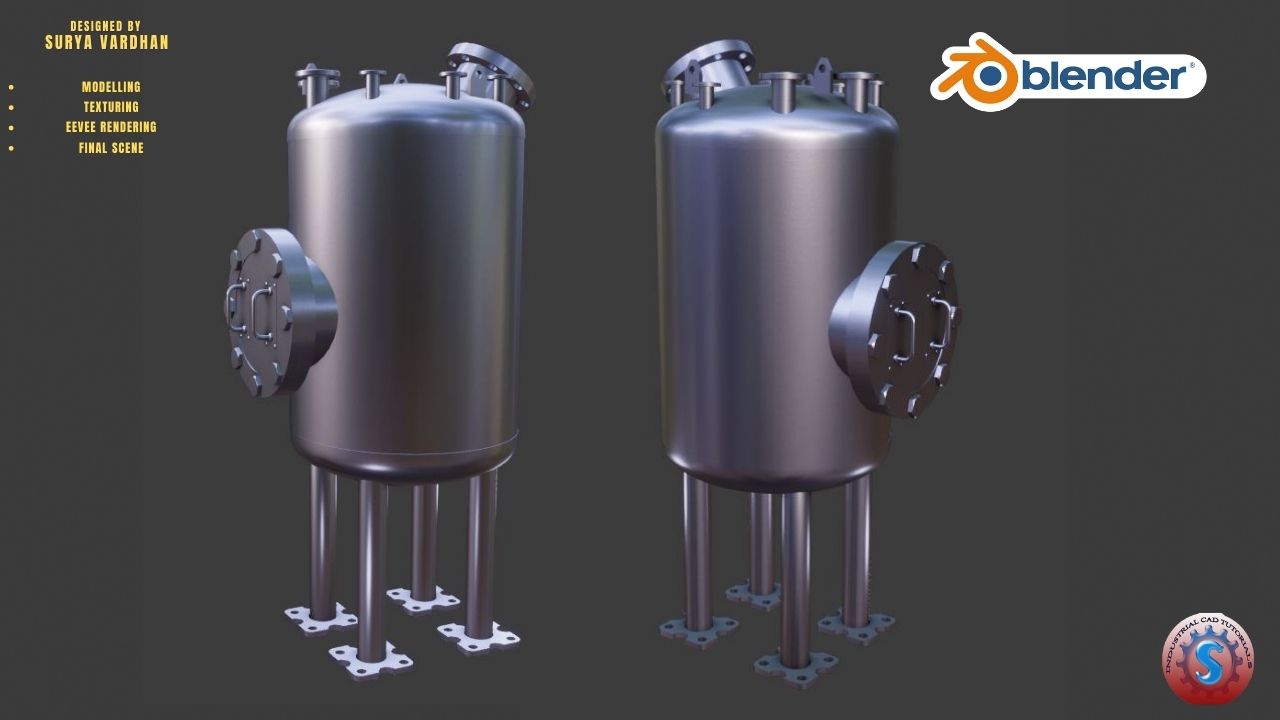A Pressure Vessel Tank in Blender refers to a 3D model or visualization of a container specifically designed to hold pressurized fluids or gases. Blender, as a versatile 3D computer graphics software, can be used to create detailed and realistic representations of pressure vessel tanks for various purposes, including engineering simulations, visualizations, or educational presentations.
Here’s an overview of the key aspects related to creating a Pressure Vessel Tank in Blender:
- Blender: Blender is a widely-used, open-source 3D modeling and animation software that enables users to design, model, texture, render, and animate 3D objects and scenes. It’s a powerful tool for creating highly detailed and accurate representations of real-world objects, including pressure vessels.
- Pressure Vessel Tanks: Pressure vessels are containers designed to store, transport, or process pressurized fluids, such as gases or liquids. They are commonly used in various industries, including chemical processing, petrochemical, oil and gas, and more. The design and modeling of pressure vessel tanks in Blender can serve engineering, safety, and educational purposes.
- Modeling: To create a Pressure Vessel Tank in Blender, users start by modeling the tank’s structure, which includes the vessel’s body, heads, nozzles, and other components. Blender provides tools for precise 3D modeling, enabling the accurate representation of the tank’s dimensions and features.
- Materials and Textures: Accurate material representation is crucial in visualizing pressure vessels. Blender allows users to apply appropriate materials and textures to simulate the tank’s surface properties, such as metal, corrosion-resistant coatings, or insulation materials.
- Pressure and Stress Analysis: While Blender is primarily a modeling and visualization tool, engineers and analysts often use specialized software to perform pressure and stress analysis on pressure vessels. These analyses help ensure that the vessel can safely contain the intended pressure and material, adhering to industry standards and safety regulations.
- Detailing: Details such as welds, support structures, and manholes are essential in accurately depicting a pressure vessel. Blender’s modeling tools enable users to add these details, ensuring a realistic representation of the tank.
- Lighting and Rendering: Proper lighting and rendering techniques are essential to create realistic and visually appealing representations of the pressure vessel. Blender offers a range of lighting options and rendering engines to achieve high-quality visual results.
- Visualization and Presentation: Pressure vessel models created in Blender can be used for various purposes, including engineering design reviews, safety assessments, training, and educational presentations. The 3D models can be animated or integrated into larger scenes to illustrate their operation and context.
Creating a Pressure Vessel Tank in Blender can be a valuable tool for engineers, designers, and educators in understanding and communicating the design and operation of pressure vessels. It allows for the creation of detailed and accurate 3D representations that can aid in engineering analysis, safety evaluations, and educational purposes.

